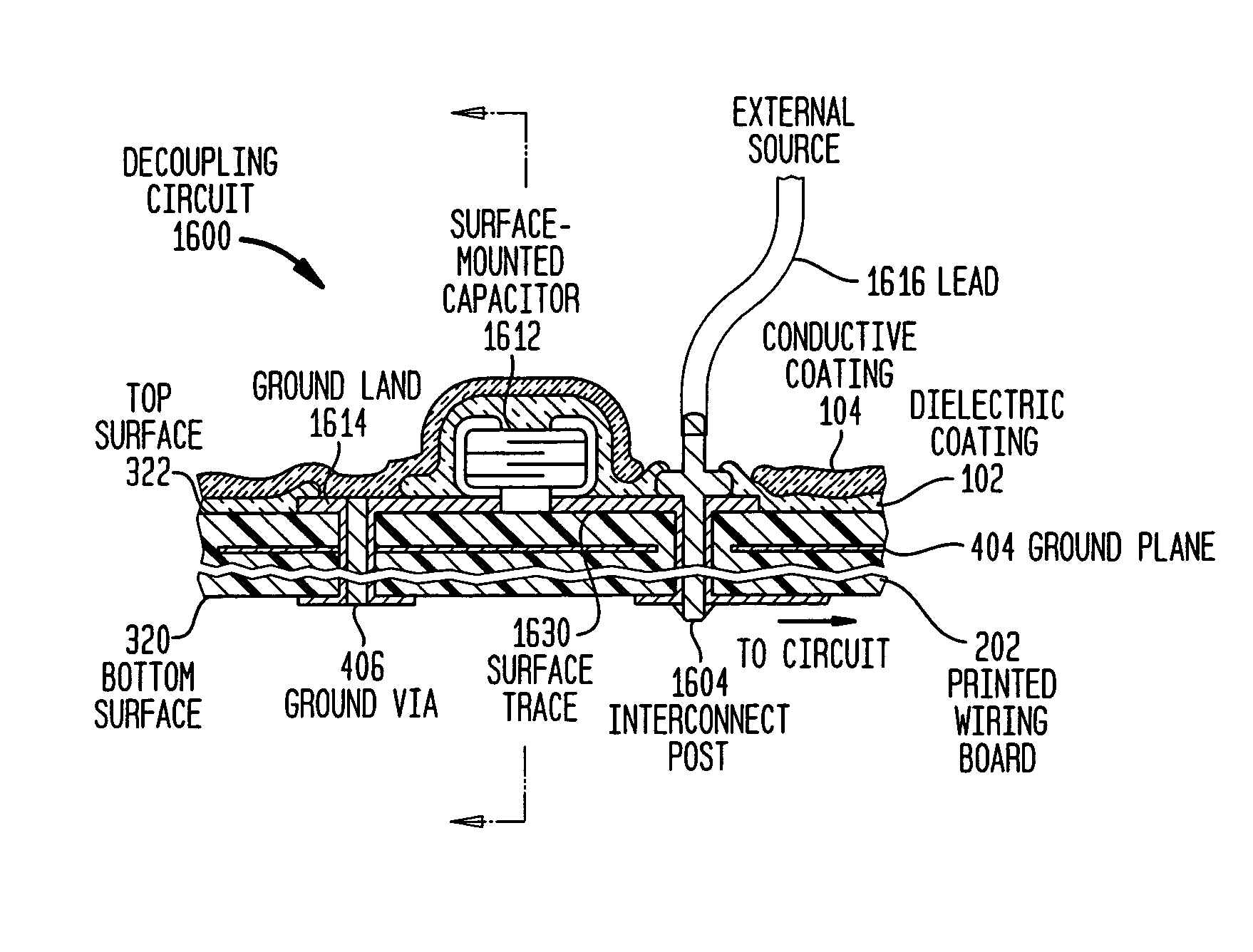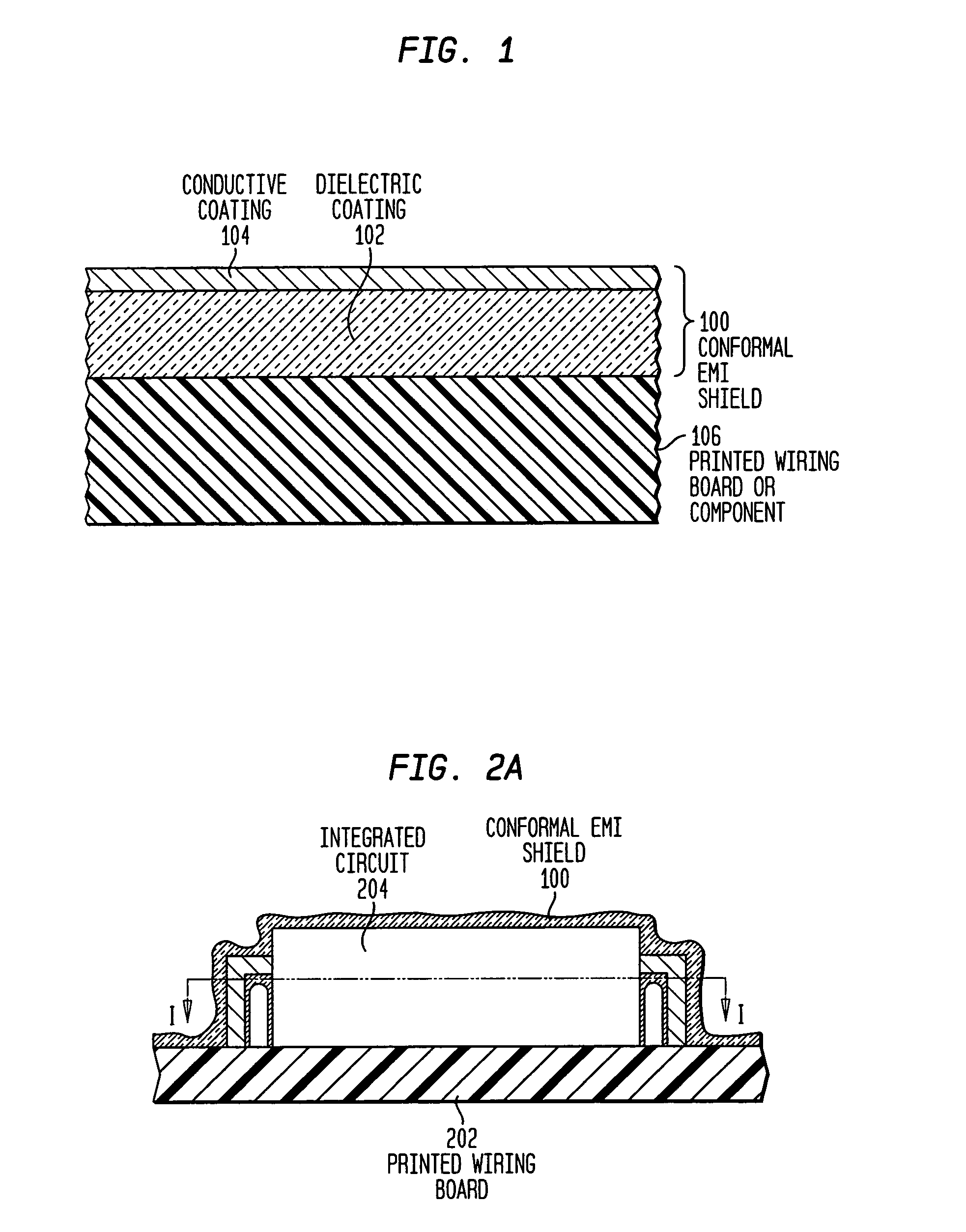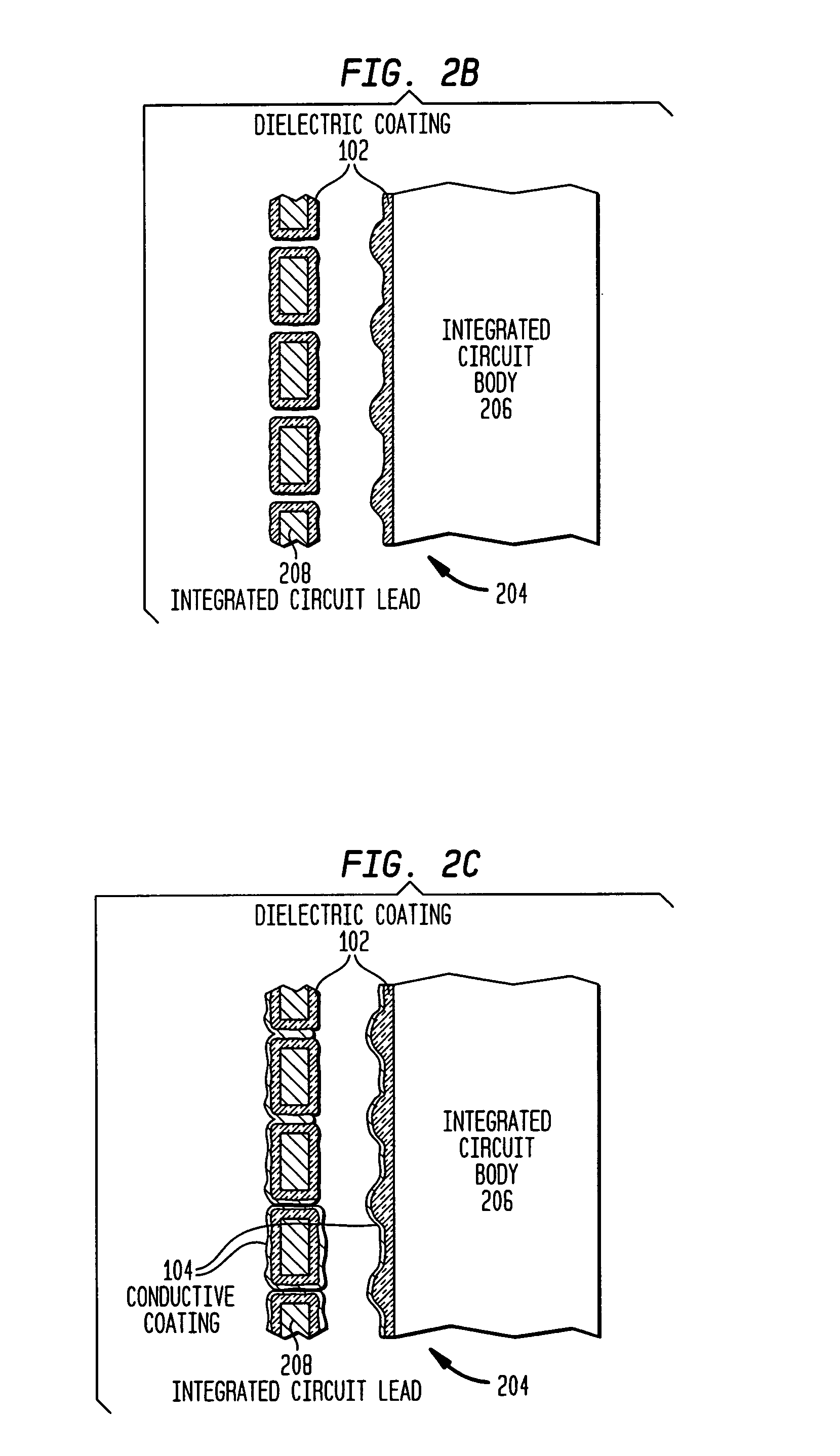Interference signal decoupling on a printed circuit board
a technology of interference signal and printed circuit board, which is applied in the direction of electrical apparatus construction details, line-transmission details, non-metallic protective coating applications, etc., can solve the problems of limiting the shielding effectiveness of components, reducing the shielding effect, and increasing the difficulty of maintaining sufficient electrical noise isolation and limiting inductance between components
- Summary
- Abstract
- Description
- Claims
- Application Information
AI Technical Summary
Benefits of technology
Problems solved by technology
Method used
Image
Examples
example 1
Boron Nitride & Acrylic Dispersion 1500
[0089]
Thermal loading material 1400:10%–80% BN, 0.1–10 micron powderBinder 1504:90%–20% AcrylicBase Liquid 1506:water or organic solventCuring:UV or thermally cured
The binder 1504 and base liquid 1506 can be provided in the above-noted acrylic intermediate dispersions. In accordance with the present invention, such intermediate dispersions are doped with the specified thermal loading material 1400 to form one embodiment of thermally conductive dielectric dispersion 1500.
example 2
Boron Nitride & Urethane Dispersion 1500
[0090]
Thermal loading material 1400:10%–80% BN, 0.1–10 micron powderBinder 1504:90%–20% UrethaneBase Liquid 1506:water or organic solventCuring:UV and / or thermally cured
The binder 1504 and base liquid 1506 can be provided in the above-noted urethane intermediate dispersions. In accordance with the present invention, such intermediate dispersions are doped with the specified thermal loading material 1400 to form one embodiment of thermally conductive dielectric dispersion 1500.
example 3
Aluminum Oxide & Acrylic Dispersion 1500
[0091]
Thermal loading material 1400:10%–80% Al2O3, 100 mesh, 99%corundum, alpha-phaseBinder 1504:90%–20% AcrylicBase Liquid 1506:water or organic solventCuring:UV or thermally cured
The binder 1504 and base liquid 1506 can be provided in the above-noted acrylic intermediate dispersions: In accordance with the present invention, such intermediate dispersions are doped with the specified thermal loading material 1400 to form one embodiment of thermally conductive dielectric dispersion 1500.
PUM
 Login to View More
Login to View More Abstract
Description
Claims
Application Information
 Login to View More
Login to View More - R&D
- Intellectual Property
- Life Sciences
- Materials
- Tech Scout
- Unparalleled Data Quality
- Higher Quality Content
- 60% Fewer Hallucinations
Browse by: Latest US Patents, China's latest patents, Technical Efficacy Thesaurus, Application Domain, Technology Topic, Popular Technical Reports.
© 2025 PatSnap. All rights reserved.Legal|Privacy policy|Modern Slavery Act Transparency Statement|Sitemap|About US| Contact US: help@patsnap.com



